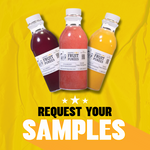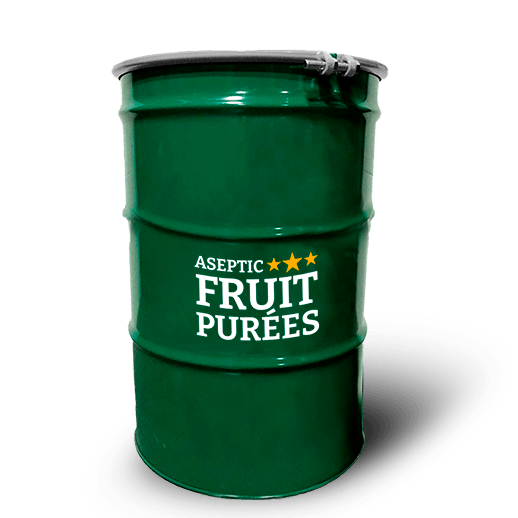We always want the best for our customers, and that includes quality information that adds value to the industry. Therefore, in this special edition, we present you this article written by our brewing consultant guru Nick Burgoyne
To ferment, or not to ferment, that is the question
The popularity of fruited offerings in craft beverages today is undeniable. Many brewers, mead, and cider makers are using fruit purée in their products. The question lies in whether or not to add it during fermentation or after? It’s a highly contentious debate. Whether you want to add a fruit purée to an existing product or plan a long-term barrel aging project, there are certainly many details to consider. People have different opinions on how they want to execute their vision. Or sometimes it simply comes down to one option being more practical than the other.
So, let’s take a deeper look at the methods used in the production of beer, mead, cider, or whatever craft beverage you may be mixing up to help you decide the best route to achieve your desired outcome and flavor profile.
Adding During Fermentation
For many brewers adding a modest amount of fruit purée during fermentation and allowing it to ferment out completely is ideal, as it will not fundamentally change the flavor profile of the beverage you are making. The end result is a product that has a dry or moderately dry finish with the only an essence of the fruit in the aroma and in the flavor. Levels will vary depending on how much you want the fruit in question to dominate the flavor and aroma, keeping the base (beer, mead, cider, etc.) in mind.
By adding a significant amount of purée, a brighter more intense fruit flavor will be achieved. However, keep in mind the amount of alcohol that will be produced during secondary fermentation can change your product. In addition, the sugar levels vary from fruit to fruit, and in each purée. In lower amounts, not exceeding one pound per gallon, alcohol pick up is not significant. These are key variables that should be considered during recipe formulation, especially if you are trying to hit a certain gravity.
Other advantages to adding purée during fermentation is the yield you will get on your final product. The purée will likely drop out with any yeast during the tail end of fermentation. Having an in-line strainer or series of strainers will catch any fruit that is left behind.
This process is best practice when packaging into cans or bottles, specifically because you are packaging a stable product. By that, it means the beverage has little to no residual sugar that could start fermenting again if conditions are optimal (i.e. temperature, did you remove all the yeast, wild yeast concerns). It is vital to keep these conditions in mind because while your product may be stable in a cooler, once it leaves the production space it is beyond your control.
Adding Post-Fermentation
This is a process adopted by many because it is a quick and pretty easy way to deliver a more fruit forward or heavily fruited “smoothie” offering without using as much purée. The main drawback to this method is a product that is high in residual sweetness and is not shelf stable. Unlike the aforementioned method, the shelf stability should be a consideration when using any kind of adjunct that contains fermentable sugar. This could fundamentally change the flavor profile or worst case -explode and injure someone. Many breweries attempt to “educate the consumer,” with recommendations to keep the product cold, but ultimately, once it has left the production space it needs to be stable enough to be enjoyed – and not seen as a sleeping giant ready to explode.
Keeping all of this in mind, the only other option would be to add a yeast inhibitor or pasteurize the product. This will add a bit of fruit character and not fundamentally change the product. If you are going for a highly fruited, sweet product, packaging in kegs is highly recommended. The trick is balancing the purée you are adding with the existing flavor profile of the beer, mead, cider etc. There could be some fruit that you can either filter out or will likely settle out in the keg. Another factor to give thought to when using large amounts of fruit purée and not allowing it to ferment out is the dilution factor. Dilution will drop the alcohol by volume and hide your base beer/mead/cider (unless this is the desired intention, in which case can be accommodated in the original recipe).
Summary
Upon weighing the pros and cons of each process, it really comes down to the vision you have for the intended beverage. When adding fruit purée during fermentation, and allowing it time to completely ferment out, will give you a dry yet subtly fruited aroma and flavor. With an increased amount of purée (perhaps to achieve a brighter fruit character), remember not all fruit purée is created equal, so it is important to know the flavor, consistency, and sugar content of what you are working with. Alcohol will also tend to drift higher if you do not factor these variables into the recipe. So, you will see a higher yield when utilizing this method, plus you will be packaging a stable product for consumers to enjoy.
On the flip side, if you decide to go the route of adding a fruit purée and not allowing it to ferment out, you will achieve a dominant, fruit-forward beverage (and with using a lower quantity of purée). This option is much quicker when making a variation of an already existing beer, mead, cider, etc. The final product will have more residual sweetness, however, will NOT be shelf stable so it is recommended that it be packaged in kegs. The shelf stability, or more importantly the lack thereof, is the most significant issue to understand if you are new to brewing, mead, or cider making. So best to allow the flavor of your brew to blow the consumer away, not the unstable packaging.
While the science behind alcoholic beverage production should not be understated, having an artful execution of your beverage is paramount. Production of any craft beverage whether it be beer, mead or cider is a masterful combination of the two, however, using purée to achieve your vision lends itself more to art over science.
Nick Burgoyne is our Brewing Consultant
with more than 15 years of experience in the
craft beer industry. nick_burgoyne@yahoo.com






